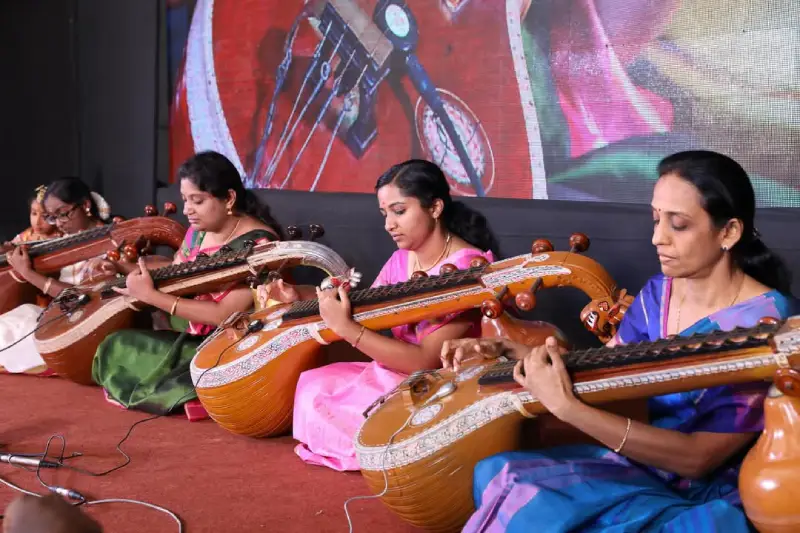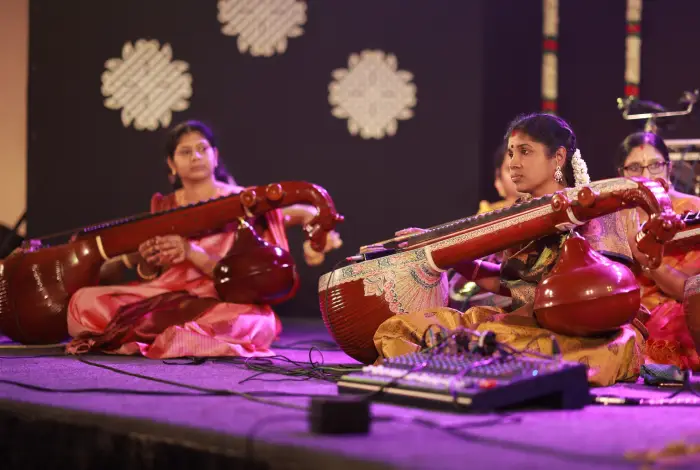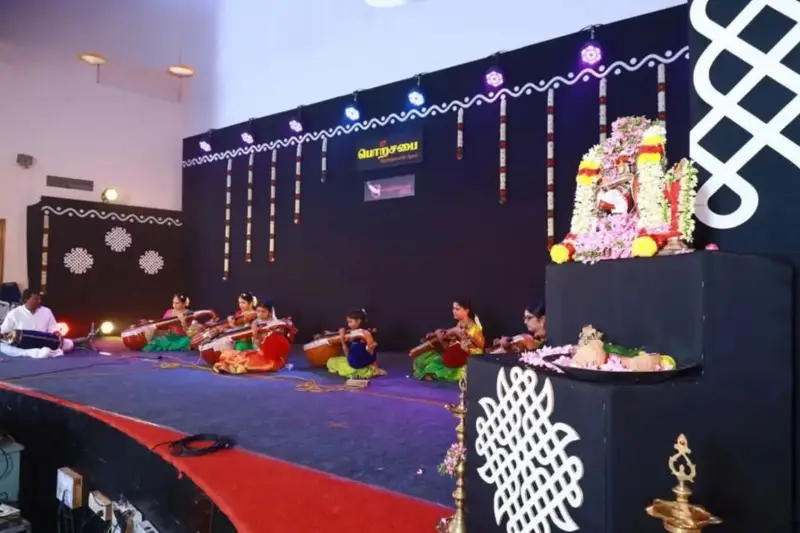Veena
Where Music Meets the Divine
The Veena course delves into the classical nuances of this traditional string instrument. Students learn to master the intricacies of playing classical compositions with precision and grace.

Strings of Serenity
The veena is one of the most ancient and distinguished stringed instruments in Indian classical music, with a history that dates back thousands of years. It holds a prominent place in both mythology and musicology, often regarded as a symbol of divine art and wisdom. The instrument is traditionally associated with Goddess Saraswati, the Hindu goddess of learning, music, and the arts, who is frequently depicted holding a veena, signifying its spiritual and cultural relevance.
Ragas on Strings
Beyond its musical capabilities, the veena is regarded as a symbol of intellectual and artistic refinement. Mastery of the veena requires not only technical skill but also a deep understanding of ragas, talas, and the emotional nuances of Indian classical music. As such, it is both a cultural artifact and a living tradition, embodying the spiritual, historical, and artistic values of Indian civilization.
The veena is not merely a musical instrument—it is a profound expression of Indian cultural identity, spiritual philosophy, and artistic legacy. For centuries, it has been revered as a sacred object, embodying the union of sound (nāda) and spirit (ātma). It holds a place of honor in temples, classical performances, and traditional households, serving as a bridge between the aesthetic and the divine.
Echoes of Tradition
In Indian culture, playing the veena is often seen as a meditative practice, a path to inner peace and self-realization. The gentle, flowing tones of the veena are believed to reflect the natural rhythms of the universe, making it a favored instrument in spiritual rituals and contemplative music. Its presence in the hands of Goddess Saraswati further reinforces its association with knowledge, wisdom, and enlightenment—values deeply ingrained in Indian philosophy.

Artistically, the veena demands a high level of mastery and sensitivity. The instrument allows for an extraordinary range of expression, from the most delicate nuances of a raga to powerful emotional narratives. The sliding technique (gamakas) on its fretboard mimics the subtle inflections of the human voice, making it one of the most expressive instruments in Indian classical music.
Veena: Voice of the Divine
Learning the veena is considered a lifelong journey, often passed down through guru-shishya parampara (teacher-disciple tradition). It fosters discipline, patience, and a deep appreciation of musical detail. For performers, it is not just about technical proficiency but also about conveying bhava—the emotional essence of music.
Today, the veena continues to be a powerful symbol of India’s artistic integrity, inspiring not just musicians but also poets, painters, dancers, and thinkers. Its sound evokes nostalgia, reverence, and pride—echoing the soul of a civilization that finds the divine in every note.
Strings of Knowledge
The veena also enhances creativity and emotional expression, allowing children to explore feelings through melody and rhythm. As they engage with classical ragas and musical storytelling, they develop a deeper sense of culture, tradition, and artistic appreciation.
Additionally, playing the veena improves fine motor skills, hand-eye coordination, and auditory perception, making it a holistic tool for cognitive development. Its soothing sounds can also promote calmness and mindfulness, helping children manage stress and emotions in a healthy way.
In essence, the veena is not just an instrument—it’s a pathway to inner growth, cultural connection, and a lifelong love for music.
Course Structure
- Basic Swara Exercises
- Alankaaras and Speed Variations
- Introduction to Ragams
- Thalam Concepts
- Music Theory
- Learning and Practicing various compositions
- Performance and Presentation Skills

